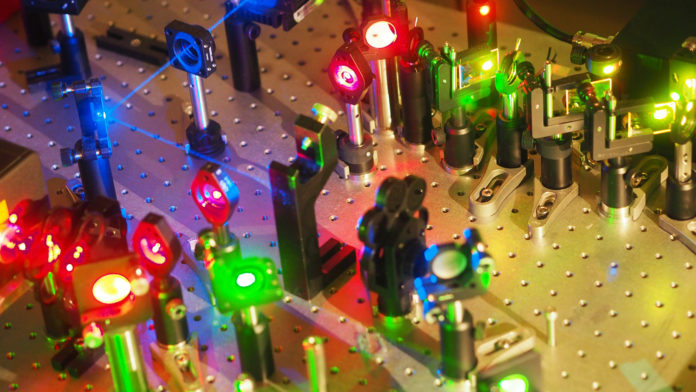According to new research at the University of British Columbia, viral assembly may be more random than previously thought; whether new viruses have all the proteins they need to infect new cells is purely a result of chance. This information could help researchers treat infected patients and develop more effective vaccines.
When a cell is infected by a virus, its cellular machinery can be hijacked and driven to produce the ingredients for new viruses. Enveloped viruses – like the ones that cause influenza, rabies, measles, and AIDS – go one step further, cloaking themselves with an outer wrapping made from the membrane of their host cell. They assemble and bud off at the host cell membrane.
Exactly how the assembly process happens provides potential pathways to disrupt an infection in its tracks. But by the same token, a mistaken step could lead researchers down a rabbit hole that is unlikely to ever arrive at an effective treatment.
Recent outbreaks of the Nipah virus (NiV) in Asia have been deadly, with mortality rates ranging from 40 to 90 percent. This is the enveloped virus that Keng Chou, professor of chemistry at UBC, chose to take a closer look at.
And by close, we’re talking about resolutions down to 10 nanometers – fine enough to be able to watch single molecules. The study was published in Nature Communications.
Safely testing a deadly virus
Because NiV is so deadly, Chou used a safe plasmid-based model of infection, where only a subset of NiV genes are introduced into cells in the lab. First he transfected human cells with plasmids that encode three important types of NiV proteins for viral assembly: matrix proteins that initiate the budding process by forming dome structures during assembly, and attachment and fusion glycoproteins which work together to bind and fuse with target host cells during infection.
The cells expressed these proteins and produced virus-like particles that bud off the host cell surface, just like a real virus would.
All three of these proteins are needed to create functional viruses.
Closer view disrupts current paradigm
Under the current model of viral assembly, it is widely believed that matrix proteins somehow recruit the other envelope proteins so that they can all come together as new viruses are formed. Many researchers have tried to identify and target this signal as a way to prevent active viruses from forming, but the actual assembly process may be much simpler.
“We looked at hundreds of images, and we couldn’t find anything that supported the current model,” said Chou in a statement. “For some of these deadly viruses, the replication process is actually not as complicated as some thought.”
Instead, what the team observed was that while matrix proteins did form clusters prior to assembling virus-like particles, the attachment and fusion glycoproteins were randomly distributed across the cell membrane. As a result, some virus-like particles lacked the full set of proteins that a virus would need to infect new cells.
These findings have important implications for making NiV vaccines, which usually present a modified virus or viral proteins to trigger an immune response. Currently, there is no approved NiV vaccine, but using virus-like particles is one possibility.
However, a vaccine that contains a large fraction of virus-like particles that have only matrix proteins, a profile that would represent inactive NiV, won’t trigger a strong immune response against the proteins most essential to infecting new cells. Developers need to either find a way to filter out these incomplete particles, or to increase the expression of attachment and fusion glycoproteins in transfected cells to increase the odds of having all three proteins present.
If the findings can be extended to the actual virus, then it also rules out the possibility of treating NiV by targeting a recruitment signal for attachment or fusion glycoproteins.
Super resolution microscopy is opening a window to observe cells at the molecular level, challenging many widely-held models in biology. The finer understanding of cellular events is poised to have a big impact on health and medicine.








































